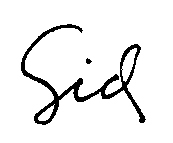Mitigating Sticker Shock
By Sid Raisch
“Oh, I didn’t think it was going to be THAT much!”
(You don’t have time to NOT read this right now because you have customers thinking, if not saying that very thing in your store.)
What is “sticker shock”? It’s a feeling of negative surprise when the cost of the items we put in our shopping cart is tallied by the POS system and we learn the total amount we’ve committed to paying at that moment.
(This is a sequel to the article on Mitigating Inflation. Click HERE to read that if you haven’t.)
There have always been signs of sticker shock in garden centers, although you may not have known what they were. You have heard comments like the one above. Another sign is the customer asking to split payment between cash, check, or credit card in order to hide part of their purchase from their significant other.
Sticker shock is not to be avoided completely. The answer to mitigating it is not to eliminate it, but to understand and accept it and then deal with it effectively to overcome long-term negative consequences on customers returning to your store. Price is the first indicator of value at the item level, and at the total amount at checkout level as well. Customers will accept a price that is higher than they were expecting, if the total perceived value is also higher than they were expecting. If done well, they’ll return with greater respect and appreciation for the value.
There may have been a slight increase in sticker shock in 2021, and there may be another increase in 2022 if we don’t implement some tactics to mitigate the effect of rising prices on rising sticker shock. Let’s take a closer look at the big picture of the situation.
Closing the Perceived Value Gap
If there is one thing our industry gained in 2021 and 2022, it is an acquired understanding that consumers saw greater value in our products and services than we had been willing to charge.
If you’re marking up over cost you’re (still) doing it wrong.
While markup over cost is a pricing model, it isn’t the best one for specialty independent retailers. The smartest pricing model is to set the price based on the value perceived by the customer.
The production driven heritage of our industry has ingrained the traditional Keystone Markup over cost mentality. This, when coupled with the “Horticulture Vow of Poverty” has long delivered low prices reflecting low self-esteem and historic low profitability which has been briefly hidden in the surge of new business that has created windfall profit for many IGC’s. Surging profit has created a “why fix it if it ain’t broke” mentality and at this very moment is exactly when it is important to clearly understand the impact of this on our thinking and our business. And that’s the point – something is broke, and the problem is masked for a while just like when that pesky squeak of your car brakes goes away and you keep driving, and then eventually it returns and it is too late – you’ve ruined the rotors and are in for a much more expensive brake job.
What is the effect of unmitigated sticker shock, and can we afford it when it comes home to roost?
2019 (Pre-Covid 19)
Price $3.99
Perceived Value $4.99
PV Gap $1.00 or 25% (We underpriced the value.)
The effect from COVID of increasing costs which were passed along in our prices took up some of the pre-existing slack in the gap between a consumers perceived value of a plant, and our prices.
2020
Price $4.99 (Cost adjusted price increase.)
Perceived Value $5.99 (Increased perceived value.)
PV Gap $1.00 OR 20%
In 2020, this was largely driven by the desire to do something to improve the consumers everyday surroundings since they were stuck at home. But there is more.
2021
Price $5.99
Perceived Value $6.99
PV Gap = $1.01 or 16.6%
In 2021 perceived value increased again, largely driven by increased awareness of the mental and physical health benefits of plants, which increased the desire to acquire them.
Cost Increase Driven Inflation
Inflation is not in cost of goods (including freight) alone. It is also in wages and wage benefits, and also in rising operating expenses. The average expected increase of grower inputs has been predicted by Dr. Charlie Hall, AmericanHort’s Chief Economist to be about 5.3% for 2022. This will be reflected along with increases in operating expenses (and profit) to determine the increased cost of goods of plant material, which is for most garden retailers about 70% of sales. Cost of non-plant retail goods are expected to increase in cost as well as you have been experiencing. That’s the increase in grower costs, and has a lot of bearing on the increase of wholesale prices because growers are ingrained with the cost plus markup pricing model.
With rising costs of goods, this spring we are now asking customers to pay a price that is possibly getting dangerously close to their perceived value. This will mean their average purchase will be increased and there is greater potential for “sticker shock” to occur when they pay. This may not show so much earlier in the season when the more experienced customers are in our stores. It is when the occasional or once a year customers awake from hibernation and emerge in response to spring fever and come in droves that the issue has greater destructive potential.
The task at hand is to do a better job of finding that magical balance between perceived value and our prices. That is highly subjective depending on the perception each retailer can create with the store environment and service level of each. The answer to this is to experiment to find the place where your value proposition is a balanced ratio between price and perception. Yes, we’re supposed to experiment with pricing early and often. Several years ago Steve Bailey was a guest at a program I had going on with some clients that had a field trip to retailers during the lunch break. Steve’s group went to Target to look at some of their merchandise management tactics and he came across a person with a cart loaded with a huge printout, an assortment of shelf price tags, and a laptop computer. This person explained that she, and two other full time employees go through the store all day every day and tweak prices on items to find the point where sales change. I recently heard of this same exact situation happening in another Target store. That’s an example of how one retailer experiments with pricing. This kind of investment in pricing is cost-effective if not wildly profitable.
2022
Price $6.99
Perceived Value $7.99 (Depending on your store.)
PV Gap = $1.01 or 14.3%
In case I haven’t been clear enough, the point is – the percent increase of getting our pricing optimized is significant and worth dealing with all around – from getting the optimum perceived value price on the product, to dealing effectively with Sticker Shock.
The days of “set it and forget it” retailing (not just pricing) are in the past. It is a little more work to adjust pricing experimentally (if you have systems to make the changes quickly), and it is also essential and high-paying work. If we’re to maintain a level of profitability that is fair as well as affordable (for us) to continue to operate profitably with rising costs of doing business, experimenting with pricing in real-time is essential. I’m working with some clients to transition to more flexible pricing methodology to improve their ability to experiment with pricing, like many other retailers do.
Mitigating Sticker Shock
Returning to the “Moment of Truth” at the checkout where Sticker Shock occurs is where this article began, and there are several good ways to counter-balance the emotional response of the customer to the total cost of the items they wanted at the price offered when they put them in their shopping cart.
Most retailers place anti-fatigue mats where their cashiers stand all day to mitigate physical fatigue. A happier cashier makes for a happier experience for the customer, mitigating buyers remorse. Have you ever seen an anti-fatigue mat at the epicenter of sticker shock, where the customer stands? Yes, a mat there would make it difficult to push the cart over it. That would be one way to help mitigate Sticker Shock, and it isn’t a suggestion, it is an example, and it is possible, and at least one IGC did it.
I’m clarifying the reality of our store environment, not giving free solutions to the problem of Sticker Shock here today. There are many small gestures that can mitigate sticker shock. The most important ones begin well before the customer arrives at the checkout.
If you need more encouragement and useful guidance in this (you do) I can help. Send a text now while you’re thinking about it and I’ll get in touch. 937-302-0423.
Next time we’ll be looking into another Moment of Truth that happens just after the customer leaves the checkout – Buyers Remorse. If you overcome that well, your customers will return with greater respect and appreciation for the value, and provide positive reviews, and referrals.
Your friend,


Before procrastination or other busyness steals another year from you Text or Call 937-302-0423 or send an email to [email protected] .
Sid Raisch is an advocate for family business leading growth, change, and results throughout US horticulture. Redefining the business future for consumer horticulture by understanding how the end-to-end supply chain needs to be redirected is a skill Sid has honed into an art. He has understanding and insight through inquisitive observations and extensive experience and has served as a trusted advisor helping transform both national and local businesses into more profitable and sustainable businesses. Developing national and international educational programs that create change in culture, community and company provides Sid venues with a front row seat creating effective and innovative business models.
Sid is a Certified Value Builder System Advisor, and currently serves as Chief Strategist and the Swiss Army Knife of Consultants to The Garden Center Group clients. Contact Sid at [email protected] or call or text 937-302-0423.
REMEMBER: Your interaction (by phone and email) with Group Service Providers such as Sid Raisch, Steve Bailey, Tim Quebedeaux, Robert Hendrickson, Jean Seawright, and John Kennedy are included in your retainer!

